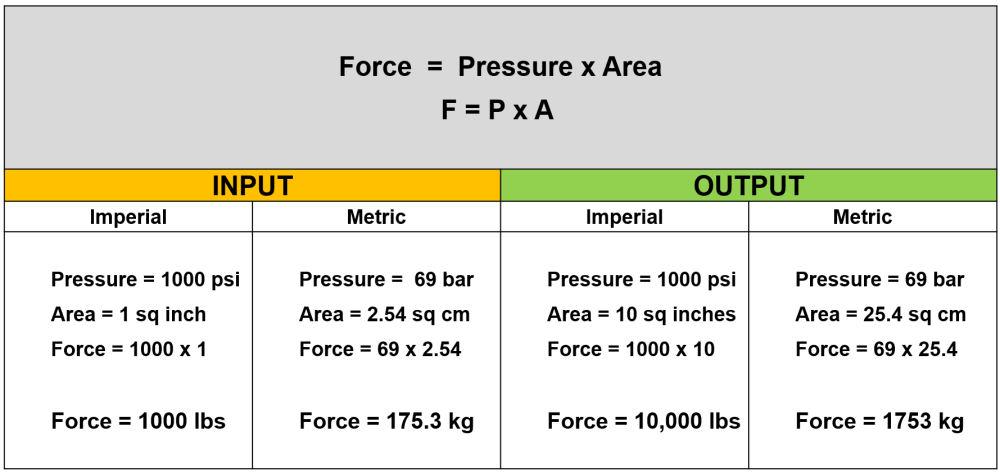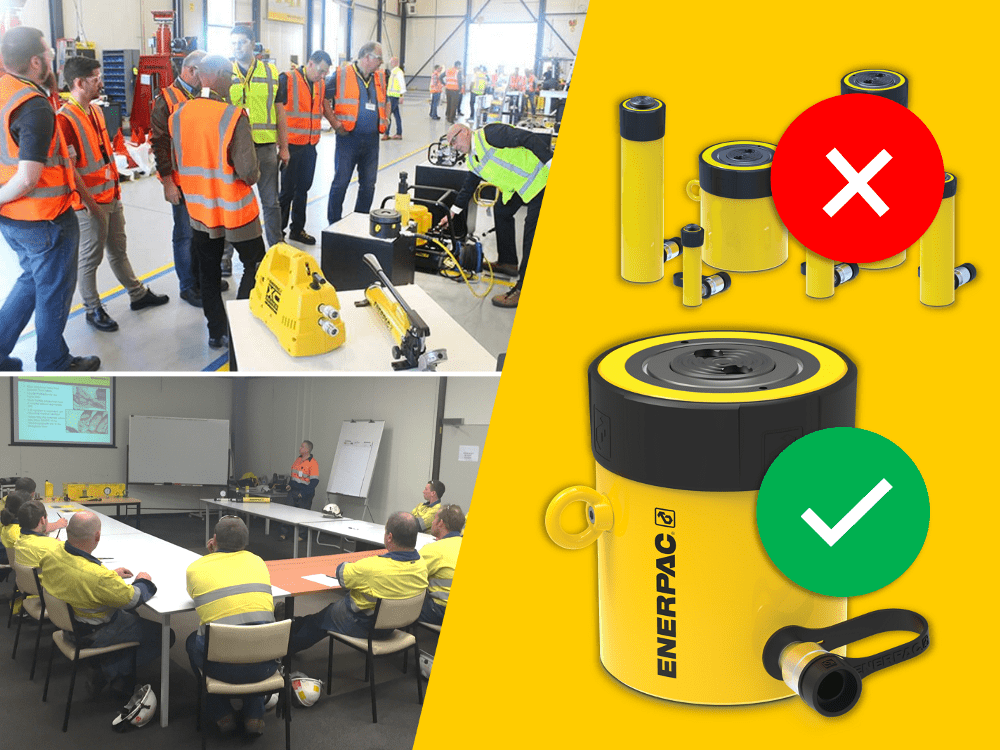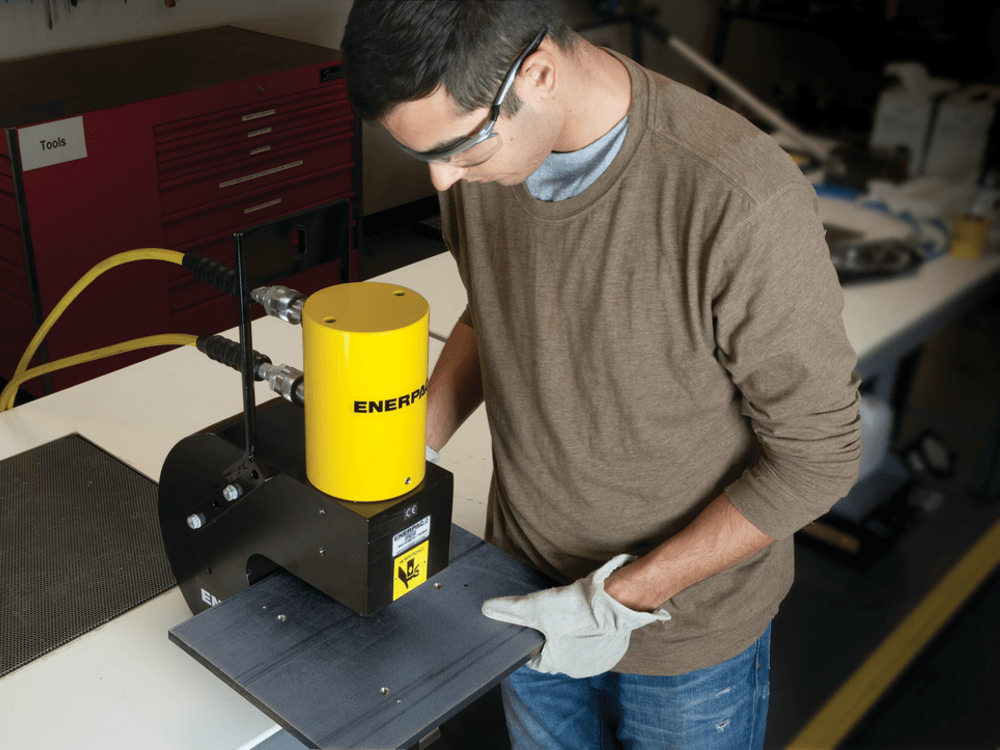Pascal’s Law and Hydraulic Tools

June 22, 2022
0
Pascal’s Law
Pascal’s Law is one of the fundamental principles of hydraulics. Blaise Pascal discovered that the pressure applied to any part of an enclosed liquid will be transmitted equally in all directions through the liquid. Unlike air, hydraulic oil is practically uncompressible*, and Pascal’s principle enables us to harness hydraulic force, which can be extremely powerful.
*Note that it is technically possible to compress a liquid, however, a huge amount of force is required, and the end result is compression by just a tiny amount.
Pascal’s Formula
Pascal’s formula is summed up in this simple equation.
Pressure = Force divided by Area (P = F/A)
Or, depending upon what you want to calculate, you can swap the units around …
Force = Pressure applied multiplied by the Area of the plunger (F = P x A)
In fig1 below, the area of each plunger is the same. We also know that according to Pascal’s Law the pressure is constant throughout the fluid. Therefore, the output force will be equal to the original force applied, and each plunger will travel the same distance.

Now let’s look at what happens when the surface area of the plungers are different. As fig 2 below shows, Pascal’s law tells us that the pressure within the fluid is equal throughout.
So, if the second plunger (A2) has an active surface area ten times greater than the first (A1), the resultant force will be ten times greater. Note that the second plunger will not travel as far as the smaller first one

The calculation example below shows the Pascal principle with some numbers applied.

Watch the video below to discover how hydraulic cylinders work – all thanks to Pascal’s law!
Pascal’s Law in Everyday Applications
Throughout everyday life, you can see examples of Pascal’s Law in action.
- A car jack at your local auto repair shop.
- A medical syringe
- Hydraulic brakes used on vehicles
- Airplane landing gear and flaps
For the engineer working on-site, there are many different industrial tools that use the mechanical advantage of Pascal’s Law. Some examples include.
- Heavy lifting equipment for construction and maintenance projects – such as hydraulic gantries and jack-up systems
- Load moving skates – used for materials handling and warehouse transportation
- Hydraulic torque wrenches and tensioning systems – for tightening and loosening nuts on pipeline flanges.
- Hydraulic presses – for punching shapes out of sheet metal, and forming car body panels.
- Flange maintenance tools – flange spreaders, pullers, and aligners.
- Hydraulic nut splitters.
- Work holding equipment at manufacturing plants.
- Hydraulic cutters for accident rescue operations
- Hydraulic pumps used to power the above tools and equipment.

The forces inside a hydraulic system can be considerable. And this means that to get the job done safely, every component needs to be robust and strong enough to handle the dramatic changes in pressure. For that reason, it is wise to invest in tools from a reputable manufacturer, and not to take risks using cheap lookalike tools.
Many Enerpac hydraulic tools, are rated to 10,000 psi 700 bar and provide the reassurance and durability you can rely on for your industrial applications.
Who was Pascal?
Blaise Pascal was a French mathematician, physicist, religious philosopher, and theologian. He was born in 1623 and lived until 1662.
In addition to discovering Pascal’s law, he made other significant contributions to mathematics and science.
- He invented the “Pascaline” – the world’s first mechanical calculator.
- He laid the foundation for probability theory (working with Pierre de Fermat).
- He contributed to projective geometry.
- In the year before his death, Pascal devised a public transport system for the common man.



